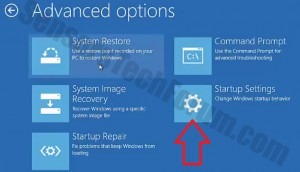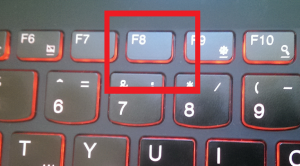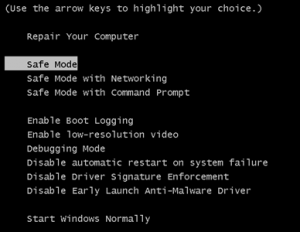| Name | Trojan.Vundo |
| Type | Trojan Horse |
| Short Description | The Trojan Horse is designed to generate intrusive advertisements and pop-ups. It can also install a rootkit. |
| Symptoms | Intrusive ads and pop-ups – fake system alerts, rogue software promotions, links to adult content, etc. |
| Distribution Method | Spam emails (via mass-mailing worms) p2p file sharing, drive-by downloads (compromised pages). |
| Detection tool | Download Malware Removal Tool, to See If Your System Has Been Affected By Trojan.Vundo |
According to security research, the infamous Vundo malware may be active again. Two executable processes have been recently monitored to contain the malicious piece – is154522.exe (reported by HerdProtect) and Install.exe (reported by VirusTotal). Trojan.Vundo, also known as VirtuMonde, VirtuMundo, and MS Juan, is classified as a Trojan horse that downloads files and generates pop-up advertisements. The malware is typically spread through spam email campaigns. Other distribution methods are also not surprising – p2p file sharing and drive-by downloads. Trojan.Vundo may also be dropped by other malware, such as Trojan downloaders and Trojan droppers.
Read & Learn More
Trojan.Vundo Technical Resume
Trojan.Vundo has been monitored to drop malicious executables on targeted systems. The names of the files can be bland (such as install.exe), so that the users are tricked into opening and running them.
However, Vundo can be dropped by other malicious software, predominantly by worms. Two mass-mailing worms have been reported to spread the Trojan:
- W32.Ackantta.B@mm
- W32.Ackantta.C@mm
Researchers have concluded that Trojan.Vundo was created for the purpose of displaying advertisements – such as pop-ups. The Trojan can also inject ads into the victim’s search results.
The pop-ups displayed by Trojan.Vundo can be:
- Fake scan alerts made to look like legitimate AV software.
- System errors.
- Pop-ups prompting users to download rogue applications.
- Adult-themed ads and services.
Clicking on the pop-ups generated by Trojan.Vundol will redirect the user to malicious websites. In addition, once the threat is activated, the user can experience difficult accessing certain pages or running an anti-virus program.
WARNING
is154522.exe and Install.exe are the two most recent files, associated directly with Trojan.Mundo.
According to researchers at Symantec, latest Trojan.Vundo types have become more sophisticated with time. Some of them may even include rootkit capabilities or can exploit local vulnerabilities. Moreover, Trojan.Vundo can even have file-encrypting skills and act as ransomware, extorting money from the victim, etc.
Here is a list of heuristic detections of Trojan.Vundo:
→Suspicious.Vundo, Suspicious.Vundo.2, Suspicious.Vundo.5, Packed.Generic.295, Packed.Generic.254, Packed.Generic.324, Packed.Vuntid!gen1, Packed.Vuntid!gen2, Trojan.Vundo.B!inf, Trojan.Vundo!gen1, Trojan.Vundo!gen2, Trojan.Vundo!gen3, Trojan.Vundo!gen5, Trojan.Vundo!gen7, Trojan.Vundo!gen8
Here is a list of detection names by various AV providers:
- DR/Virtumonde.tmj.40 (Avira Antivirus)
- Win32:Akan (Avast)
- MemScan:Trojan.FakeAlert.AJF (BitDefender)
- Trojan.DownLoader.50219 (Dr.Web)
- Win32/Kryptik.AD (variant) (ESET NOD32)
- MemScan:Trojan.FakeAlert.AJF (F-Secure)
- Trojan.Win32.Monder (Kaspersky)
- Artemis!265AC9F5CE3F (McAfee)
- Mal_Vundo-31 (TrendMicro)
Trojan.Vundo Removal Report
The threat and its various examples can be removed automatically by running a powerful anti-spyware tool. Keep in mind that Trojan.Vundo can install a rootkit on the infected system. Removing the rootkit is crucial to restoring the system. You should run AV software that has proven to be effective in detecting and removing rootkits.
Follow closely the removal manual provided below. If you have any questions or difficulties in removing the Trojan, join our security forum. Our team of security experts will be happy to assist you.
Step 1: Start Your PC in Safe Mode to Remove Trojan.Vundo.
Removing Trojan.Vundo from Windows XP, Vista, 7 systems:
1. Remove all CDs and DVDs, and then Restart your PC from the “Start” menu.
2. Select one of the two options provided below:
– For PCs with a single operating system: Press “F8” repeatedly after the first boot screen shows up during the restart of your computer. In case the Windows logo appears on the screen, you have to repeat the same task again.
– For PCs with multiple operating systems: Тhe arrow keys will help you select the operating system you prefer to start in Safe Mode. Press “F8” just as described for a single operating system.
3. As the “Advanced Boot Options” screen appears, select the Safe Mode option you want using the arrow keys. As you make your selection, press “Enter“.
4. Log on to your computer using your administrator account
While your computer is in Safe Mode, the words “Safe Mode” will appear in all four corners of your screen.
Removing Trojan.Vundo from Windows 8, 8.1 and 10 systems:
Substep 1:
Substep 2:
Whilst holding down Shift button, click on Power and then click on Restart.
Substep 3:
After reboot, the aftermentioned menu will appear. From there you should choose Troubleshoot.

Substep 4:
You will see the Troubleshoot menu. From this menu you can choose Advanced Options.

Substep 5:
After the Advanced Options menu appears, click on Startup Settings.

Substep 6:
Substep 7:
A menu will appear upon reboot. You should choose Safe Mode by pressing its corresponding number and the machine will restart and boot into Safe Mode so you can scan for and remove Trojan.Vundo.
Step 2: Remove Trojan.Vundo automatically by downloading an advanced anti-malware program.
To clean your computer you should download an updated anti-malware program on a safe PC and then install it on the affected computer in offline mode. After that you should boot into safe mode and scan your computer to remove all Trojan.Vundo associated objects.
Preparation before removing Trojan.Vundo.
Before starting the actual removal process, we recommend that you do the following preparation steps.
- Make sure you have these instructions always open and in front of your eyes.
- Do a backup of all of your files, even if they could be damaged. You should back up your data with a cloud backup solution and insure your files against any type of loss, even from the most severe threats.
- Be patient as this could take a while.
- Scan for Malware
- Fix Registries
- Remove Virus Files
Step 1: Scan for Trojan.Vundo with SpyHunter Anti-Malware Tool



Step 2: Clean any registries, created by Trojan.Vundo on your computer.
The usually targeted registries of Windows machines are the following:
- HKEY_LOCAL_MACHINE\Software\Microsoft\Windows\CurrentVersion\Run
- HKEY_CURRENT_USER\Software\Microsoft\Windows\CurrentVersion\Run
- HKEY_LOCAL_MACHINE\Software\Microsoft\Windows\CurrentVersion\RunOnce
- HKEY_CURRENT_USER\Software\Microsoft\Windows\CurrentVersion\RunOnce
You can access them by opening the Windows registry editor and deleting any values, created by Trojan.Vundo there. This can happen by following the steps underneath:


 Tip: To find a virus-created value, you can right-click on it and click "Modify" to see which file it is set to run. If this is the virus file location, remove the value.
Tip: To find a virus-created value, you can right-click on it and click "Modify" to see which file it is set to run. If this is the virus file location, remove the value.Step 3: Find virus files created by Trojan.Vundo on your PC.
1.For Windows 8, 8.1 and 10.
For Newer Windows Operating Systems
1: On your keyboard press + R and write explorer.exe in the Run text box and then click on the Ok button.

2: Click on your PC from the quick access bar. This is usually an icon with a monitor and its name is either “My Computer”, “My PC” or “This PC” or whatever you have named it.

3: Navigate to the search box in the top-right of your PC's screen and type “fileextension:” and after which type the file extension. If you are looking for malicious executables, an example may be "fileextension:exe". After doing that, leave a space and type the file name you believe the malware has created. Here is how it may appear if your file has been found:

N.B. We recommend to wait for the green loading bar in the navigation box to fill up in case the PC is looking for the file and hasn't found it yet.
2.For Windows XP, Vista, and 7.
For Older Windows Operating Systems
In older Windows OS's the conventional approach should be the effective one:
1: Click on the Start Menu icon (usually on your bottom-left) and then choose the Search preference.

2: After the search window appears, choose More Advanced Options from the search assistant box. Another way is by clicking on All Files and Folders.

3: After that type the name of the file you are looking for and click on the Search button. This might take some time after which results will appear. If you have found the malicious file, you may copy or open its location by right-clicking on it.
Now you should be able to discover any file on Windows as long as it is on your hard drive and is not concealed via special software.
Trojan.Vundo FAQ
What Does Trojan.Vundo Trojan Do?
The Trojan.Vundo Trojan is a malicious computer program designed to disrupt, damage, or gain unauthorized access to a computer system. It can be used to steal sensitive data, gain control over a system, or launch other malicious activities.
Can Trojans Steal Passwords?
Yes, Trojans, like Trojan.Vundo, can steal passwords. These malicious programs are designed to gain access to a user's computer, spy on victims and steal sensitive information such as banking details and passwords.
Can Trojan.Vundo Trojan Hide Itself?
Yes, it can. A Trojan can use various techniques to mask itself, including rootkits, encryption, and obfuscation, to hide from security scanners and evade detection.
Can a Trojan be Removed by Factory Reset?
Yes, a Trojan can be removed by factory resetting your device. This is because it will restore the device to its original state, eliminating any malicious software that may have been installed. Bear in mind that there are more sophisticated Trojans that leave backdoors and reinfect even after a factory reset.
Can Trojan.Vundo Trojan Infect WiFi?
Yes, it is possible for a Trojan to infect WiFi networks. When a user connects to the infected network, the Trojan can spread to other connected devices and can access sensitive information on the network.
Can Trojans Be Deleted?
Yes, Trojans can be deleted. This is typically done by running a powerful anti-virus or anti-malware program that is designed to detect and remove malicious files. In some cases, manual deletion of the Trojan may also be necessary.
Can Trojans Steal Files?
Yes, Trojans can steal files if they are installed on a computer. This is done by allowing the malware author or user to gain access to the computer and then steal the files stored on it.
Which Anti-Malware Can Remove Trojans?
Anti-malware programs such as SpyHunter are capable of scanning for and removing Trojans from your computer. It is important to keep your anti-malware up to date and regularly scan your system for any malicious software.
Can Trojans Infect USB?
Yes, Trojans can infect USB devices. USB Trojans typically spread through malicious files downloaded from the internet or shared via email, allowing the hacker to gain access to a user's confidential data.
About the Trojan.Vundo Research
The content we publish on SensorsTechForum.com, this Trojan.Vundo how-to removal guide included, is the outcome of extensive research, hard work and our team’s devotion to help you remove the specific trojan problem.
How did we conduct the research on Trojan.Vundo?
Please note that our research is based on an independent investigation. We are in contact with independent security researchers, thanks to which we receive daily updates on the latest malware definitions, including the various types of trojans (backdoor, downloader, infostealer, ransom, etc.)
Furthermore, the research behind the Trojan.Vundo threat is backed with VirusTotal.
To better understand the threat posed by trojans, please refer to the following articles which provide knowledgeable details.







